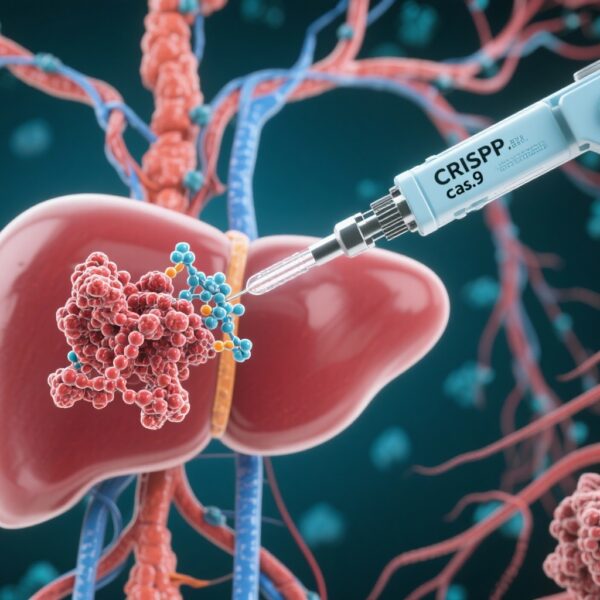Highlight
Extended low-dose apixaban (2.5 mg twice daily) significantly reduces symptomatic recurrent venous thromboembolism (VTE) in patients with provoked VTE and enduring risk factors compared to placebo. The incidence of major bleeding is low, supporting safety in prolonged therapy. Clinically relevant nonmajor bleeding increases slightly without statistical significance. Mortality is low and unrelated to cardiovascular or hemorrhagic causes.
Study Background and Disease Burden
Venous thromboembolism (VTE), encompassing deep vein thrombosis and pulmonary embolism, represents a major cause of morbidity and mortality worldwide. Anticoagulation is the cornerstone of VTE management; however, determining the optimal duration of therapy remains challenging. Particularly, patients experiencing VTE provoked by transient risk factors such as surgery, trauma, or immobilization generally have a lower risk of recurrence after cessation of anticoagulation. Nevertheless, when enduring risk factors coexist—such as chronic medical conditions or persistent thrombophilic states—the appropriate duration of anticoagulant therapy remains uncertain.
This clinical equipoise poses a significant problem in practice, given the risks associated with prolonged anticoagulation, especially bleeding, against the dangers of recurrent thrombosis. Current guidelines vary in recommendations, often suggesting extending anticoagulation beyond 3 months in selected patients with persistent risk factors, but without definitive evidence favoring one strategy over another.
Study Design
The HI-PRO trial was a prospective, randomized, double-blind, placebo-controlled single-center study that enrolled 600 adult patients who had completed at least 3 months of anticoagulation for a provoked VTE event attributed to a transient risk factor but who also had at least one enduring risk factor.
Participants were randomized 1:1 to receive either oral apixaban at a low dose of 2.5 mg twice daily or a matching placebo for an additional 12 months. The primary efficacy outcome was the incidence of the first symptomatic recurrent VTE during the treatment period. The primary safety outcome was the occurrence of major bleeding events defined per the International Society on Thrombosis and Hemostasis criteria.
The population was diverse, with a mean age of 59.5 years, female predominance (57%), and almost one-fifth non-White. A wide variety of provoking and enduring risk factors were represented, enhancing the generalizability of the findings.
Key Findings
During the 12-month follow-up, symptomatic recurrent VTE occurred in 1.3% (4/300) of patients receiving apixaban versus 10.0% (30/300) in the placebo group, yielding a hazard ratio of 0.13 (95% confidence interval [CI], 0.04 to 0.36; P<0.001). This represents an 87% relative risk reduction in recurrence with apixaban.
Major bleeding was rare, occurring in only one patient in the apixaban group and none in the placebo group, indicating that extended low-dose apixaban therapy carries a low risk of serious hemorrhagic complications in this population.
Clinically relevant nonmajor bleeding occurred more frequently with apixaban (4.8%) compared to placebo (1.7%), corresponding to a hazard ratio of 2.68 (95% CI, 0.96 to 7.43; P = 0.06), a difference that approached but did not reach statistical significance. This suggests a trend toward increased minor bleeding events that should be considered in clinical decision-making.
Mortality was low and similar in both groups, with one death in the apixaban group and three in the placebo group. Importantly, no deaths were attributed to cardiovascular or hemorrhagic causes. The incidence of nonhemorrhagic, nonfatal adverse events was comparable between groups (2.0% each).
Expert Commentary
This trial provides high-quality evidence supporting the benefit of extended, low-intensity anticoagulation with apixaban in a carefully selected cohort of patients with provoked VTE who harbor ongoing additional risk factors for recurrence. It addresses an important gap in clinical guidance where uncertainty frequently leads to either premature discontinuation or unnecessarily prolonged treatment with attendant bleeding risk.
The results are consistent with the biological plausibility that persistent prothrombotic conditions increase recurrent VTE risk despite resolution of the provoking factor, thereby justifying prolonged anticoagulation.
Limitations include the single-center design, which may affect broader generalizability, and the relatively limited ethnic diversity. Further multicenter studies and longer follow-up could reinforce these findings.
Current guideline updates should consider incorporating these new data, as the favorable risk-benefit profile demonstrated here suggests a potential shift toward extended low-dose apixaban use in similar patient populations.
Conclusion
In patients with venous thromboembolism provoked by transient factors but complicated by enduring risk factors, extended anticoagulation with low-dose apixaban for 12 months dramatically reduces symptomatic recurrence without substantially increasing the risk of major bleeding. This strategy offers a clinically meaningful improvement over placebo, informing optimizing anticoagulation duration decisions in this challenging subgroup.
Clinicians should weigh the modest increase in nonmajor bleeding against the substantial reduction in VTE recurrence. Personalized anticoagulation plans incorporating patient risk profiles for thrombosis and bleeding remain paramount.
Future research should explore comparative effectiveness against other direct oral anticoagulants and assess the cost-effectiveness and quality of life implications of extended low-dose oral anticoagulation.
References
1. Piazza G, Bikdeli B, Pandey AK, et al. Apixaban for Extended Treatment of Provoked Venous Thromboembolism. N Engl J Med. 2025 Sep 25;393(12):1166-1176. doi:10.1056/NEJMoa2509426. Epub 2025 Aug 30. PMID: 40888734.


